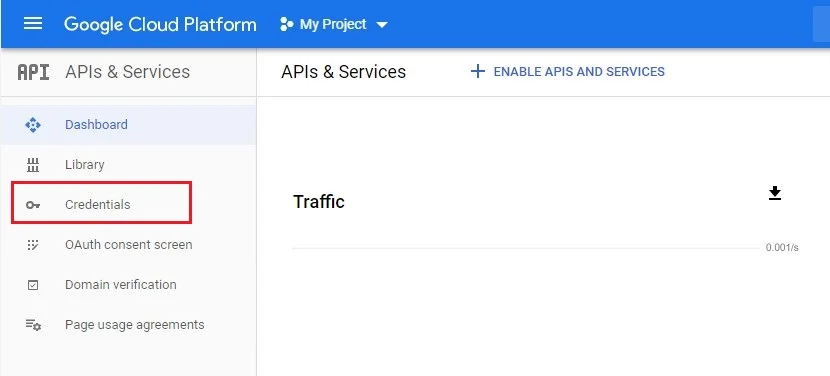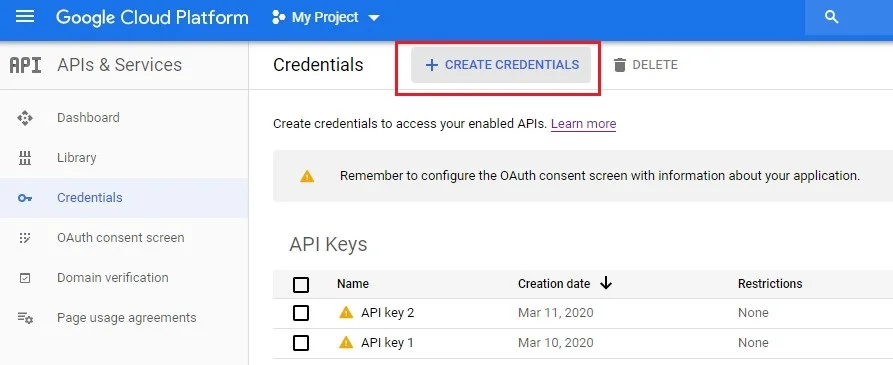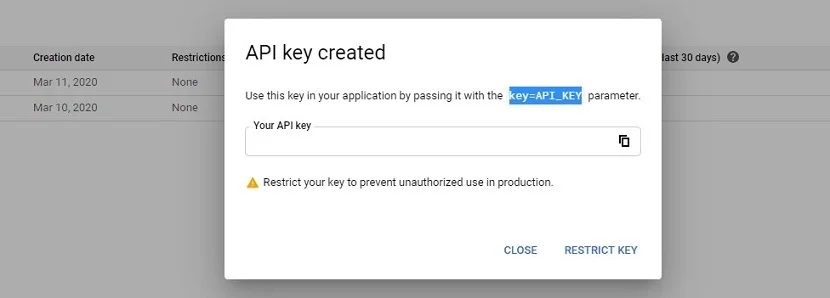How To Disable Automatic Google Drive Uploads
If you lot were planning to get-go working with Drive API by Google whatever time before long, we've prepared a complete guide for yous. Today you'll acquire what exactly it tin can exist used for and also how to get an API key in a few steps.
Contents
- 1. What is Google Drive API
- What tin can you lot do using this tool
- 2. How to become Google Bulldoze API key
- three. Using Google Drive API: examples
- Example 1: Drive API upload file
- Case 2: Bulldoze API share file
- Example 3: Drive API search for files and list files in folder
- Example 4: Drive spreadsheet API
- Case five: Drive API delete file
- 4. Google Drive API documentation
- 5. Google Derive API limits and pricing
- 6. FAQ
- seven. Conclusion
What is Google Drive API
Google Drive API is a tool that allows users create apps leveraging Drive cloud storage. Past ways of this feature you can develop applications integrating with Google Drive and create powerful functionality in your applications.
What can you do using this tool
This option can be used to:
- Download and upload files to Drive.
- Search for files and folders .
- Create complex search queries that return whatsoever of the file metadata fields in the Files resource.
- Allow users share files, folders and drives to cooperate on content.
- Combine with the Picker API to search all files in Google Bulldoze, return the file proper noun, URL, last modified appointment, and user.
- Create shortcuts which are external links to data kept outside of Bulldoze, in a different data store or cloud storage system.
- Class a defended binder to store your application's information to foreclose the app from accessing all the user's content.
- Integrate with the Drive UI which tin can be used to interact with Drive files.
To successfully work with API y'all've got to get an API Fundamental. Let'south come across how you tin can exercise it.
How to get Google Drive API cardinal
To generate your API key, your account must be conferred the archaic Editor part on the ongoing projection.
Tip: Roles are used to provide a user, a group or a service account with permissions to use the resource. You tin can go more than information on roles here.
To set up an API fundamental, follow these steps:
- Open the APIs & Services → Credentials board in the Cloud Google Drive API panel.

- Option Create credentials choice and so select API key from the dropdown list.

- The dialog screen volition demonstrate your new API fundamental.

In case you lot need to state which web pages, IP addresses or applications can apply your API central, you are free to add app restrictions based on your application type. Listen that yous can but set i restriction type per API key.
Using Google Bulldoze API: examples
There are several ways you may apply Google Bulldoze API. Allow'due south discuss some of them.
Example 1: Google Bulldoze API upload file
You can upload file data when you create or update a File resource. At that place are three types of uploads yous tin perform:
- Unproblematic. It is suitable for quick transfer of a small-scale file (5MB or less).
- Multipart upload. It tin be used for a quick transfer of a pocket-size file and metadata that describes the file, all in a single request.
- Resumable upload. It can be performed for more reliable transfer, especially important with large files.
This instance demonstrates a simple upload request:
POST googleapis/upload/drive/v3/files?uploadType=media HTTP/one.i Content-Type: paradigm/jpeg Content-Length: [NUMBER_OF_BYTES_IN_FILE] Authorization: Bearer [YOUR_AUTH_TOKEN] [JPEG_DATA]
A multipart upload request tin look similar this:
Mail service googleapis/upload/bulldoze/v3/files?uploadType=multipart HTTP/one.one Authority: Bearer [YOUR_AUTH_TOKEN] Content-Type: multipart/related; purlieus=foo_bar_baz Content-Length: [NUMBER_OF_BYTES_IN_ENTIRE_REQUEST_BODY] --foo_bar_baz Content-Blazon: application/json; charset=UTF-8 { "name": "myObject" } --foo_bar_baz Content-Blazon: epitome/jpeg [JPEG_DATA] --foo_bar_baz-- This example displays how to initiate a resumable session to upload a new file:
Mail googleapis/upload/drive/v3/files?uploadType=resumable HTTP/1.1 Say-so: Bearer [YOUR_AUTH_TOKEN] Content-Length: 38 Content-Type: application/json; charset=UTF-8 X-Upload-Content-Blazon: image/jpeg X-Upload-Content-Length: 2000000 { "proper noun": "myObject" } Most Google API client libraries utilize at least i of these methods. To get more info on how to use each of the methods, click hither.
Case 2: Google Drive API share file
Each Google Drive file has associated Permissions resource. Each resource identifies the permission for a specific blazon and office, for example, "commenter" or "reader". To share a file or folder, the user must have the author role.
Tip: the consummate list of roles and the operations permitted by each can be constitute hither.
The following fields are necessary when creating a permission:
- Blazon. It identifies the scope of the permission – user, group, domain or anyone.
- Role. It identifies the operations that the type can perform.
Here's an instance of performing a permission with a client library.
String fileId = "1sTWaJ_j7PkjzaBWtNc3IzovK5hQf21FbOw9yLeeLPNQ"; JsonBatchCallback<Permission> callback = new JsonBatchCallback<Permission>() { @Override public void onFailure(GoogleJsonError e, HttpHeaders responseHeaders) throws IOException { // Handle mistake System.err.println(eastward.getMessage()); } @Override public void onSuccess(Permission permission, HttpHeaders responseHeaders) throws IOException { System.out.println("Permission ID: " + permission.getId()); } }; BatchRequest batch = driveService.batch(); Permission userPermission = new Permission() .setType("user") .setRole("author") .setEmailAddress("[email protected]"); driveService.permissions().create(fileId, userPermission) .setFields("id") .queue(batch, callback); Permission domainPermission = new Permission() .setType("domain") .setRole("reader") .setDomain("example.com"); driveService.permissions().create(fileId, domainPermission) .setFields("id") .queue(batch, callback); batch.execute(); You lot can discover more information on sharing files, folders and drives here.
Case 3: Google Drive API search for files and list files in folder
To search for a specific set of files and folders, you lot should employ the query string q with files.list to filter the files to return.
The following example demonstrates the format of a query string:
query_term operator values
Where:
-
query_termis the query term or field to search upon. To wait through the query terms which can be used to filter shared drives, cite Search query terms. -
operatordesignates the condition for the query term. You lot tin refer to Query operators to view which operators you can use with each query term. -
valuesare the specific values you are using to filter your search results.
The post-obit case demonstrates how to use a client library to filter search results to file names and IDs of JPEG images.
String pageToken = null; practise { FileList result = driveService.files().listing() .setQ("mimeType='image/jpeg'") .setSpaces("bulldoze") .setFields("nextPageToken, files(id, proper name)") .setPageToken(pageToken) .execute(); for (File file : result.getFiles()) { Arrangement.out.printf("Found file: %s (%s)\n", file.getName(), file.getId()); } pageToken = result.getNextPageToken(); } while (pageToken != nix); More examples are available hither.
Example 4: Google Bulldoze spreadsheet API
To create a new spreadsheet, you should use create() method on the spreadsheet collection as it is shown in the example beneath.
Spreadsheet spreadsheet = new Spreadsheet() .setProperties(new SpreadsheetProperties() .setTitle(title)); spreadsheet = service.spreadsheets().create(spreadsheet) .setFields("spreadsheetId") .execute(); System.out.println("Spreadsheet ID: " + spreadsheet.getSpreadsheetId()); Example v: Google Bulldoze API delete file
To skip the trash, you can permanently delete file past ID. The currently authenticated user must own the file or exist an organizer on the parent for shared drive files. The code example for this method:
import com.google.api.services.drive.Drive; import coffee.io.IOException; // ... public class MyClass { // ... /** * Permanently delete a file, skipping the trash. * * @param service Drive API service instance. * @param fileId ID of the file to delete. */ individual static void deleteFile(Bulldoze service, Cord fileId) { try { service.files().delete(fileId).execute(); } grab (IOException e) { Arrangement.out.println("An error occurred: " + eastward); } } // ... } Google Drive API Documentation
You can find the necessary Google Bulldoze API documentation hither. It contains all the files on working with API for developers and as well on integration of it into your website.
Google Drive API limits and pricing
Google Drive API usage is totally free for users worldwide. Although it has some usage limits:
| Requests | Limits |
| Requests per day | 1,000,000 |
| Requests per 100 seconds per user | i,000 |
Yous can notice a link to request more quota in the "Quotas" tab – if you need more than the default. Also, to notice more information about pricing, check this page.
FAQ
I've got insufficient permission for the Google Drive API. What should I do?
Choose the correct telescopic from the listing hither. This should solve the problem with insufficient Google Drive API permission.
How tin can I get help with the Drive API?
Yous can use Q&A website Stack Overflow to post your technical questions. Developers usually use tag [google-drive-api] to mark questions relevant to this service.
How much does Google Drive API cost?
The usage of Google Bulldoze API is completely free. But there are some limits. You can see the tabular array at the Pricing department above.
How can I start using the Drive API?
Conclusion
Equally you can run into, working with Google Drive API is non that difficult. Getting the API key volition take less than three minutes and this Bulldoze API tutorial will come in handy.
Now tell united states of america, practise y'all apply this tool? Have you ever faced any difficulties while working with it? Share your thoughts in the comments! And don't forget to bank check our weblog soon to get more useful guides.
Source: https://elfsight.com/blog/2020/03/how-to-use-google-drive-api-and-get-an-api-key/
Posted by: mcclainwhatlet.blogspot.com


0 Response to "How To Disable Automatic Google Drive Uploads"
Post a Comment